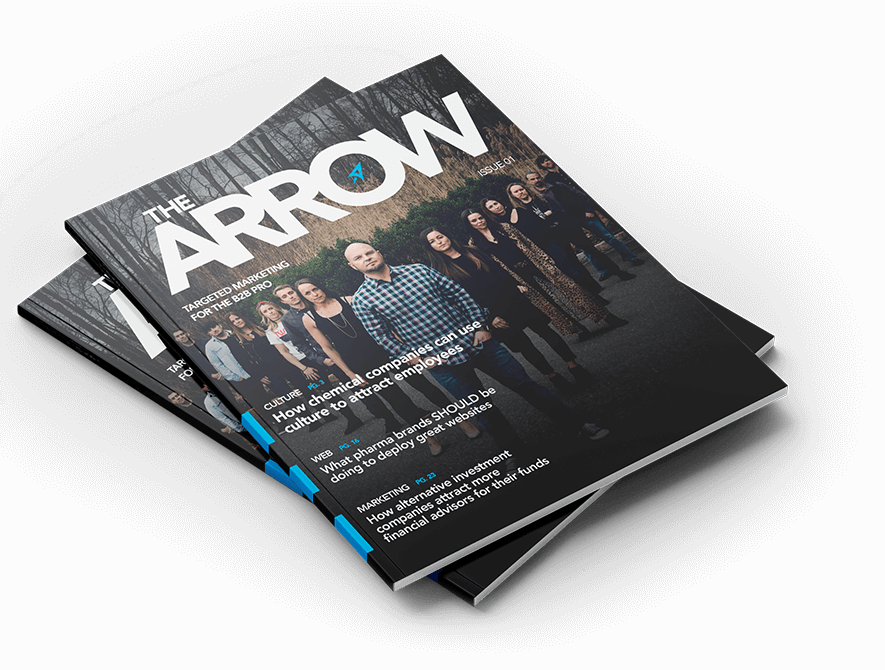Justin & Kyle Murphy of Halsted: A Legacy of Trust and Innovation in Industrial Packaging
Chris Mulvaney is the CEO of CMDS. I make things... I’m the creative entrepreneur with passion for (re)making brands and inventing solutions to problems no one knows exist.
In This Podcast
Sit down with CMDS CEO, Chris Mulvaney as he deep dives with local business owners Justin and Kyle Murphy from Halsted Bags and find out what it’s like to have 150 years of business under you belt.
Introduction
Welcome to a deep dive into the fascinating world of Halsted, a family-owned business with a legacy spanning 147 years. I recently had the pleasure of interviewing Justin and Kyle Murphy from Halsted on the Arrow Podcast. Our conversation unveiled the rich history, innovative strategies, and resilient spirit that have propelled Halsted from a humble burlap bag manufacturer to a major player in the industrial packaging industry. Join me, Chris Mulvaney, as we explore the journey of this remarkable company, the challenges it has overcome, and the vision that drives its future.
The Origins of Halsted
When Justin and Kyle Murphy, CEO and COO of Halsted respectively, joined me on the Arrow Podcast, we started by tracing the company’s origins.
“Halsted started in 1876 by the Halsted family on the banks of the Hudson River in Manhattan,” Justin explained. “Initially, it was a small operation manufacturing potato sacks and burlap bags, catering to the agricultural sector in the Mid-Atlantic and Northeast regions.”
Their clients back then were primarily farmers and agricultural businesses, supplied through a network of distribution channels—a business model that remarkably remains unchanged after nearly a century and a half.
The Evolution of Halsted
Discussing the evolution of Halsted, Kyle noted, “Our grandfather started working at Halsted as a part-time bookkeeper to pay his way through NYU. After graduating, he returned to the business. Mr. Halsted, having no heirs interested in continuing the business, gifted 50% of it to our grandfather, who then purchased the remaining 50%.”
Justin added, “Our father joined in the 1970s, and we both came into the business later. I’m currently the CEO, and Kyle is the COO.”
Adapting to Market Changes
One of the pivotal moments in Halsted’s history came in the early 1970s when the influx of cheaper imports from Asia threatened their market position. “Our largest client informed us that we needed to be price competitive with these imports,” Justin recalled. “This pushed us to enter the import business, a shift that has defined our operations as a major importer and distributor.”
This strategic pivot marked the beginning of Halsted’s transformation from a local manufacturer to a global distributor, emphasizing a high-volume, low-margin business model crucial for survival and growth.
Leadership and Family Dynamics
The role of family in Halsted’s growth cannot be understated. “Our father was the jack-of-all-trades, managing sales, operations, and finances,” Kyle said. “He saw the dark days and turned the business around. Our growth is built on the foundation he laid.”
Modernizing Operations
When Justin joined the company in 2010, he recognized the need to modernize operations. “One of my initial tasks was to alleviate our father from day-to-day sales responsibilities, allowing him to focus more on strategic growth,” he said. The move from an outdated manufacturing facility in Jersey City to a state-of-the-art warehouse in Cranberry was a game-changer.
Kyle elaborated, “This move was the biggest risk we ever took but also the most transformative. Our new facility, five times larger than the old one, has changed how we operate, enabling faster and more efficient order fulfillment.”
Emphasizing Customer Service
Reflecting on Halsted’s core values, Justin emphasized, “Our business is built on 148 years of trust and service. We emphasize fast and reliable delivery, understanding that our clients depend on us to fill gaps in their supply chains. Our reputation and customer relationships are our most valuable assets.”
This focus on customer service aligns with the insights I often share with my clients. In today’s competitive landscape, exceptional customer service is not just a differentiator but a fundamental expectation. Businesses that excel in this area build lasting relationships and foster loyalty, which are critical for long-term success.
The Importance of Process and People
Justin and Kyle recognize that maintaining high service standards requires robust processes and the right people. “We’re focusing on improving our processes across all departments,” Justin said. “Ensuring we have the right people and systems in place is crucial for scaling effectively.”
Kyle added, “Investing in quality people and building solid infrastructure are our priorities. This will help us manage growth without compromising on service quality.”
Personal Insights and Future Goals
Running a business is demanding, and finding balance is essential. Both Justin and Kyle enjoy playing golf and spending time with their young families to unwind.
Looking ahead, Justin’s primary goal for Halsted is to refine their processes to enhance efficiency and service quality. “We need to ensure we have the right SOPs and people in place to support our growth,” he emphasized.
Conclusion
Halsted’s journey is a testament to the power of resilience, innovation, and family values. From its humble beginnings to becoming a trusted partner in the industrial packaging industry, Halsted’s story is one of continuous adaptation and unwavering commitment to customer satisfaction. As Justin and Kyle Murphy steer the company towards a promising future, their focus on trust, service, and operational excellence will undoubtedly drive further success.
For new clients, partnering with Halsted means joining a legacy of trust, reliability, and unparalleled service. With a rich history and a forward-thinking approach, Halsted is poised to continue its legacy of excellence for generations to come.
Insights from Chris Mulvaney: Building a Brand through Trust and Innovation
As a leader in the marketing and business growth space, I have seen firsthand how companies can thrive by focusing on their core strengths and values. Halsted’s story is a perfect example of this principle in action. By maintaining a steadfast commitment to trust and customer service, they have built a brand that stands out in the competitive industrial packaging market.
In my experience, businesses that prioritize their customers and continuously seek ways to improve their operations are the ones that achieve sustainable growth. Halsted’s journey underscores the importance of strategic adaptation and investing in both people and processes. These elements are the building blocks of a successful business, enabling companies to navigate challenges and seize new opportunities.
As you reflect on Halsted’s story, consider how these insights can be applied to your own business. Whether it’s enhancing customer service, modernizing operations, or fostering a strong company culture, the lessons from Halsted can guide you towards building a resilient and thriving enterprise.
Join us on the Arrow Podcast for more inspiring stories and actionable insights that can help you drive growth and innovation in your business.






